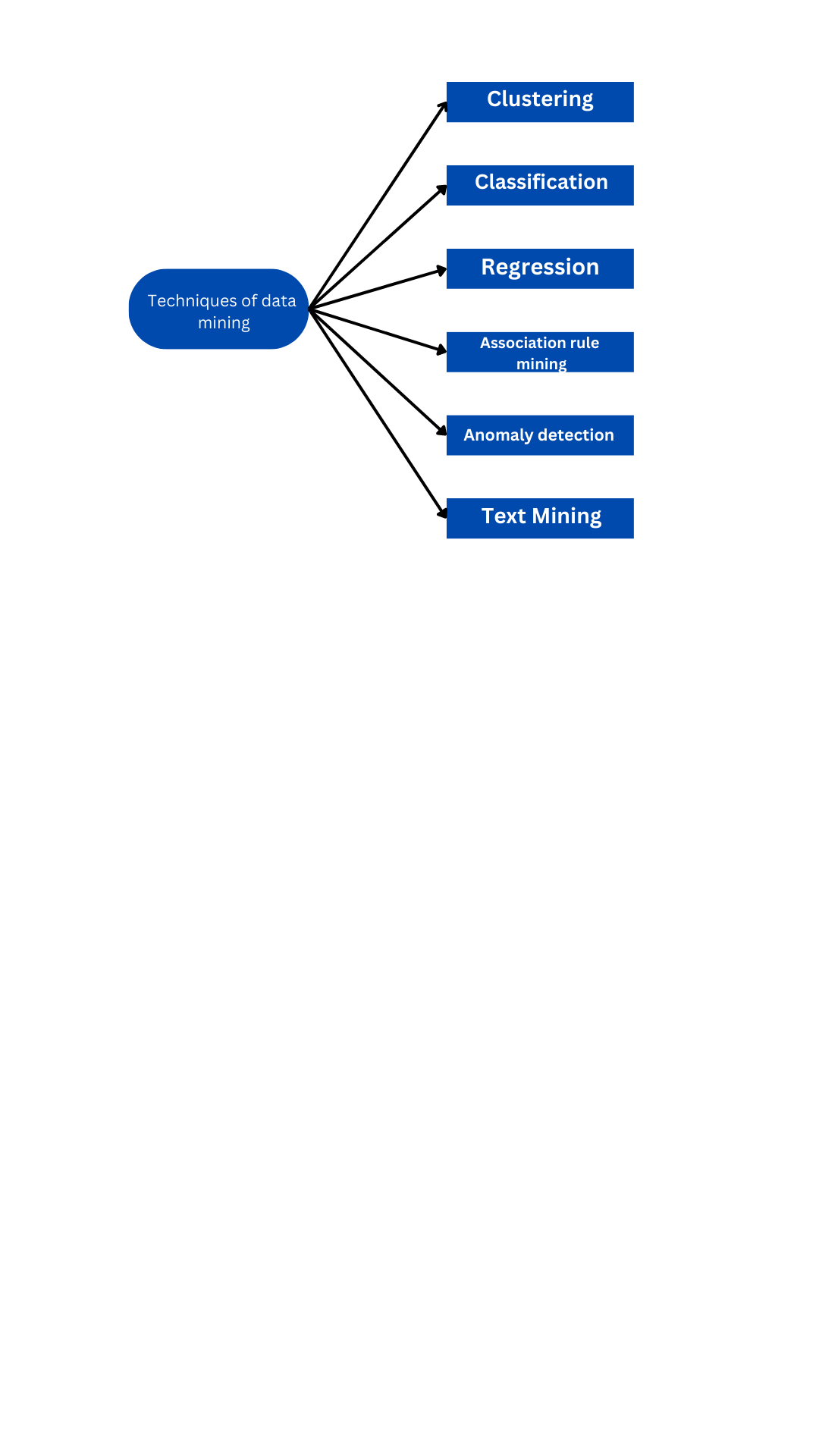Data Mining Characteristics
Data mining is the process of discovering patterns, correlations, and insights in large datasets using statistical and machine learning techniques. Here are some key characteristics of data mining:
Large datasets: Data mining is typically used with large datasets that are too large to analyze using traditional manual methods.
Complex data: Data mining is capable of analyzing complex and diverse data types, such as text, images, audio, and video.
Automated: Data mining algorithms can automate the process of discovering patterns and relationships in data.
Statistical and machine learning techniques: Data mining uses a variety of statistical and machine learning techniques to uncover patterns and relationships in data, such as clustering, classification, regression, and association analysis.
Predictive: Data mining can be used to make predictions about future trends and behaviors based on historical data.
Business applications: Data mining is used in a variety of business applications, such as customer segmentation, fraud detection, market basket analysis, and churn prediction.
Iterative: Data mining is an iterative process, where the results of one analysis are used to refine and improve the next analysis.
Overall, data mining is a powerful tool for uncovering insights and relationships in large datasets that would be difficult or impossible to discover using traditional manual methods.
Techniques of Data Mining
Data mining involves the use of various techniques to extract valuable insights and knowledge from large datasets. Here are some common techniques of data mining:
Clustering: Clustering is a technique that involves grouping similar data points together into clusters based on their similarity or proximity. This technique is often used for customer segmentation or identifying patterns in data.
Classification: Classification is a technique that involves predicting the class or category of a new data point based on its characteristics and historical data. This technique is often used for fraud detection, spam filtering, or medical diagnosis.
Regression: Regression is a technique that involves predicting a numerical value for a new data point based on its characteristics and historical data. This technique is often used for sales forecasting, risk analysis, or financial analysis.
Association rule mining: Association rule mining is a technique that involves discovering relationships and patterns between variables in a dataset. This technique is often used for market basket analysis, where retailers try to identify products that are frequently purchased together.
Anomaly detection: Anomaly detection is a technique that involves identifying unusual or unexpected data points in a dataset. This technique is often used for fraud detection or network intrusion detection.
Text mining: Text mining is a technique that involves analyzing text data to extract valuable insights and knowledge. This technique is often used for sentiment analysis, topic modeling, or identifying key phrases in large documents.
Time series analysis: Time series analysis is a technique that involves analyzing data over time to identify patterns and trends. This technique is often used for stock market forecasting, weather forecasting, or sales forecasting.
Overall, these techniques of data mining provide a powerful toolset for uncovering valuable insights and knowledge from large datasets.
